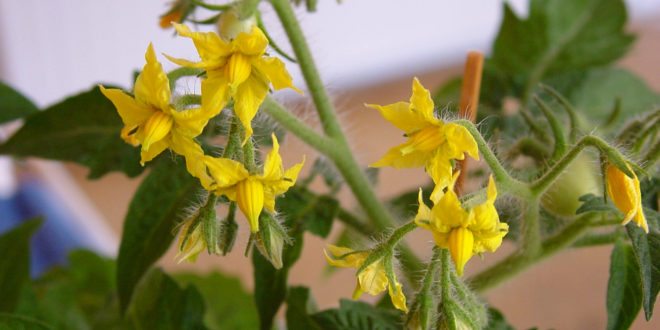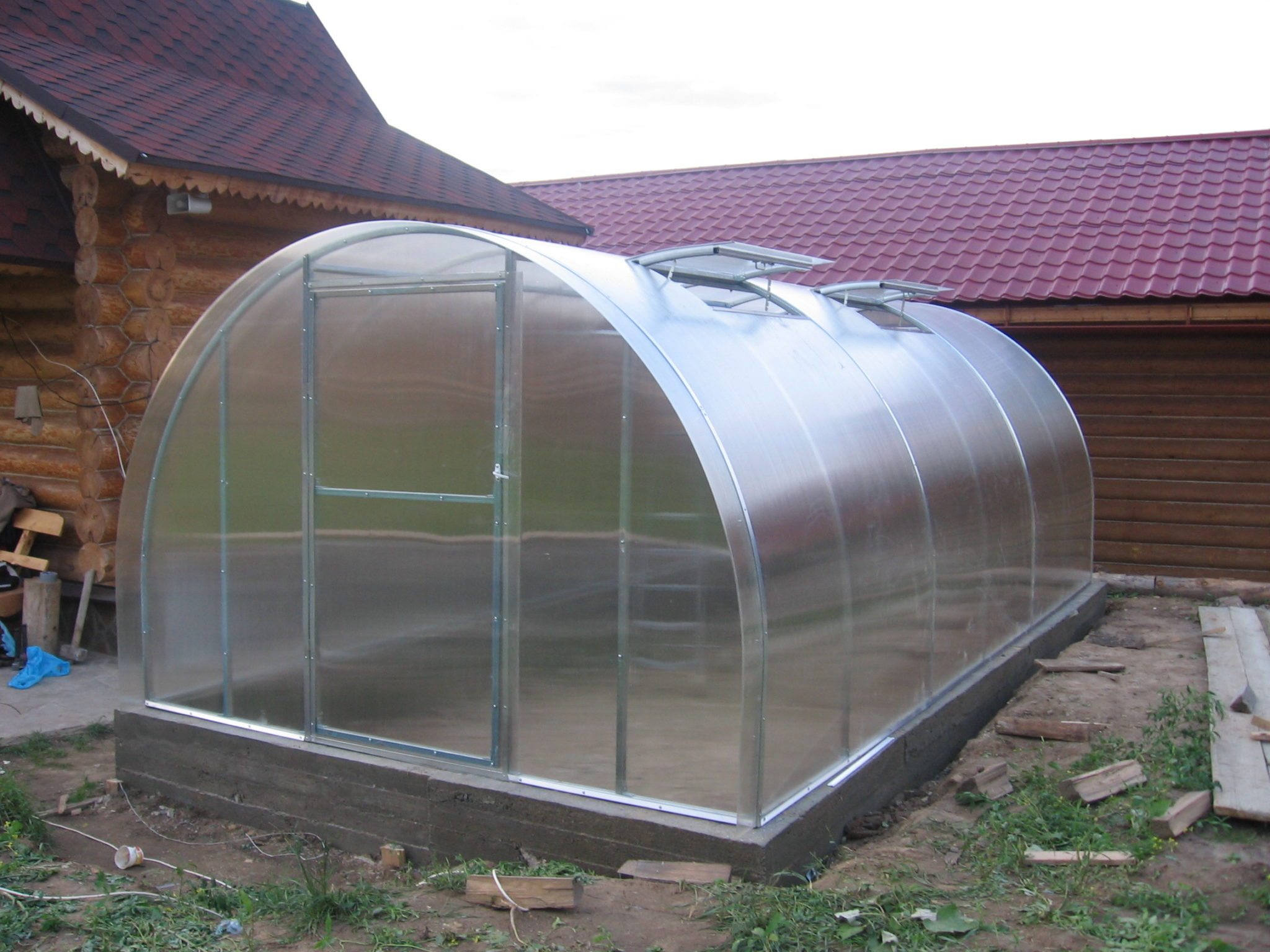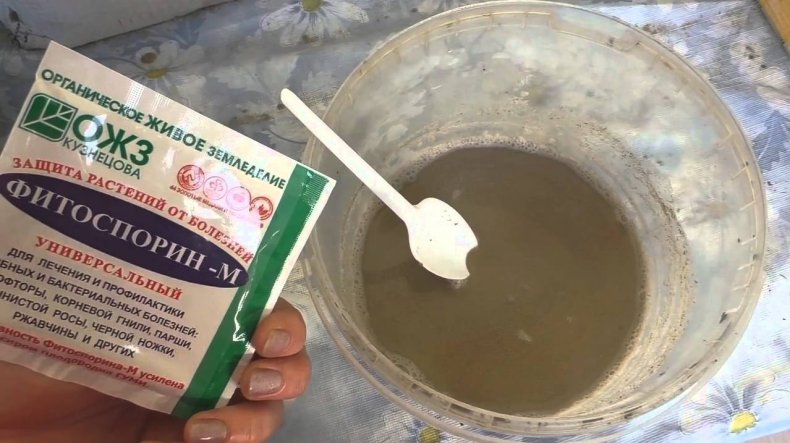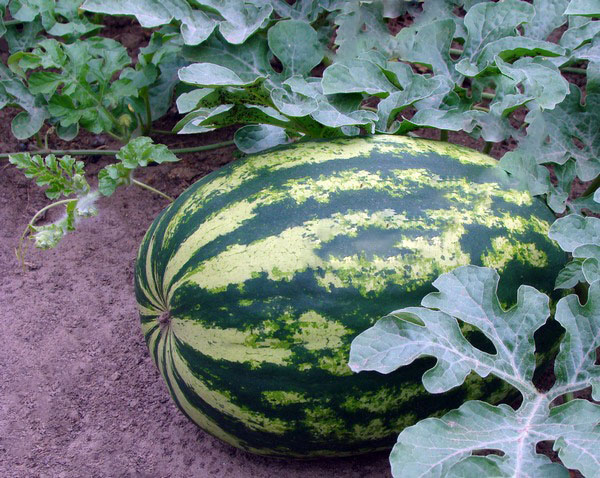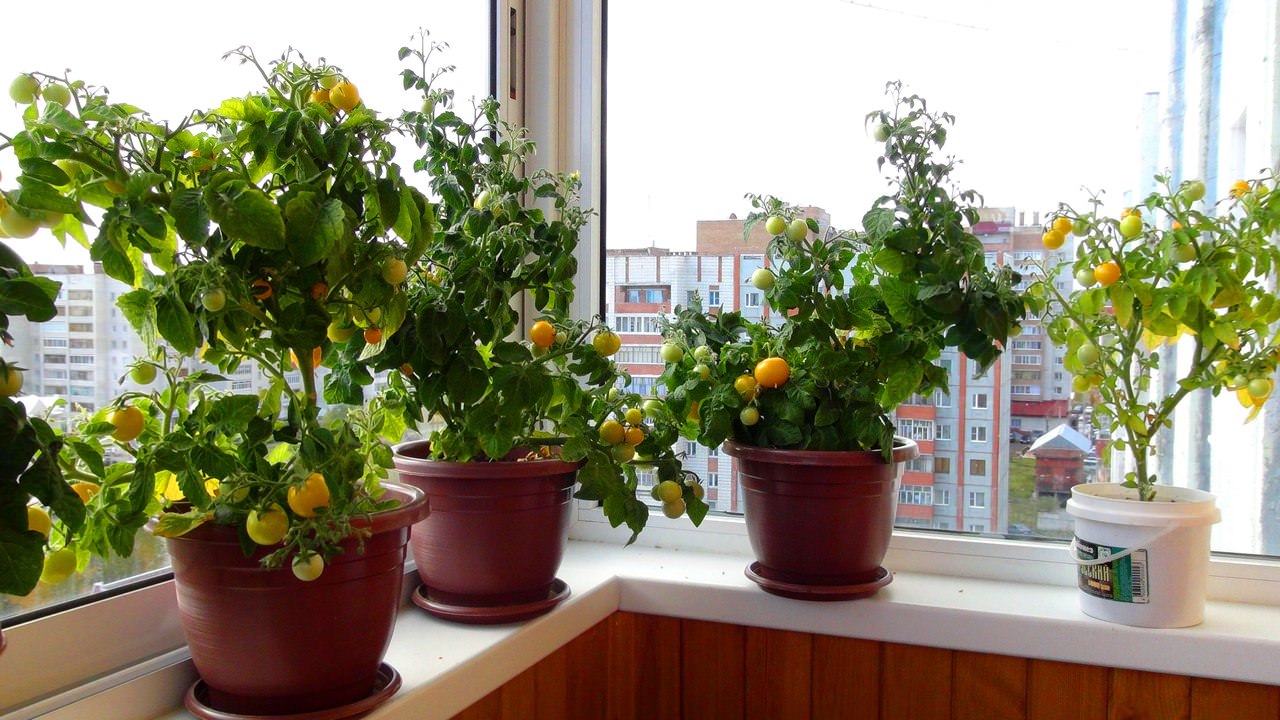Content:
Tomatoes are heat-loving plants. In temperate climates, they are often grown at home and in greenhouses. For fruits to form, pollination of the flowers must occur. This process in tomatoes occurs naturally, with the help of wind and insects. If plants grow indoors, simple ventilation is not enough and insects have very limited access to flowers. As a result, on strong, healthy plants, even with abundant flowering, a small amount of tomatoes is formed. Therefore, to harvest a rich harvest, artificial pollination is required.
How to artificially pollinate tomatoes at home
When pollinating tomatoes on a windowsill, balcony or loggia, it should be borne in mind that this is a living space. Therefore, it is not recommended to use special chemicals.
There are several simple and healthy pollination methods:
- Using a soft brush for painting, they collect pollen from some flowers of the plant and transfer them to other non-pollinated flowers.
- Gently shaking the bush. This procedure is carried out several times. As a result, the pollen is transferred to the pistil and fertilization occurs.
- At home, they also resort to using a fan. It is important to calculate the strength of the wind, otherwise you can break the shoots.
- You can make a draft for a while by opening two windows or a balcony and a window for air movement at the same time. It is advisable to see the vibrations of flowers on plants - this means that self-pollination of tomatoes occurs.
- By means of an electric toothbrush. The working tool is carefully brought to the flowers. The tomato pollen ends up on the pistil and the flower is pollinated. The procedure is recommended to be carried out very carefully, since brushing a flower with a brush can damage it.
Pollination of tomatoes in a greenhouse
Indoor pollination conditions
To pollinate tomatoes, certain conditions are required:
- Temperature. The optimum ambient temperature during flowering during the day is +19 +22 ° С; at night +16 +17 ° С. When the temperature falls below + 15 ° С, the anthers are damaged. The maximum temperature in the greenhouse is up to 32 ° C. Pollen does not germinate in higher temperatures.
If the owners of polycarbonate greenhouses are rarely in the country, you can install vents that open automatically. - Humidity. The most suitable flowering moisture is 70%. If the air is much drier, pollination will not be successful. When the humidity rises for a long time, the pollen grains clump together.
- Lighting. Pollination of tomatoes is best done in the morning, as the pollen ripens at night. The weather should not be rainy.
It is advisable to build a greenhouse in a sunny place. Plants should not be cramped in it. Low bushes are planted near the walls of the greenhouse, and higher ones closer to the middle.
Greenhouse pollination techniques
Pollination of tomatoes in a greenhouse can be carried out by the same methods as under indoor conditions: shaking the bush, using a fan, a brush and an electric toothbrush.
Additional methods for indoor pollination:
- the use of bumblebees,
- spraying with boric acid.
The method of using bees or bumblebees can increase the yield of tomatoes by ¼ or more. You can start a hive or buy several pieces of these insects if we are talking about large-scale cultivation areas. However, there is an easier way to pollinate tomatoes in a polycarbonate greenhouse: spray the flowers with a weak solution of sugar to attract bumblebees and bees.
Potted garden flowers are also recommended to attract pollinators. Another way is to plant colorful annual honey plants between tomato bushes. For example sage, alyssum, marigolds.
A popular folk method of increasing yields is the treatment of bushes with boric acid. Boron stimulates the germination of pollen grains and the subsequent growth of fruits. With the help of boric acid, you can increase the number of tomatoes by 20%. A weak solution is used for this.
The correct proportion is not more than 10 grams of boric acid per bucket of water. Spray 1-2 times at the flowering stage of the second and third brushes. You should avoid getting boron on the shoots, focusing on the flowers.
Pollination products for tomatoes
Many summer residents use chemicals to increase the immunity of plants to negative factors and improve the quality of fruits.
Such funds are in demand as:
- "Ovary". The action is based on certain phytohormones gibberellins, which are necessary for fertilization. In addition, it contains molybdenum and manganese to enhance the action of plant hormones. This drug is recommended for areas with sharp temperature fluctuations and late frosts.
- "Bud" contains an active active ingredient - sodium salt of gibberellic acids. It also contains humates and trace elements: boron, copper, manganese.
- Gibberellic acid is sold separately. It can be purchased dry or liquid. It is used not only for the formation of ovaries, but also as a growth stimulator for seeds and seedlings.
- "Tomaton" is developed on the basis of phytohormones auxins. During unfavorable conditions, fruit formation may be impaired due to a lack of auxin. This tool is used for short daylight hours, drought and low temperatures.
When treating plantings with chemicals, you must strictly follow the instructions for use.
Practical tips and tricks for pollination and ovary formation
When pollinating tomatoes at home and in a greenhouse manually, it is advisable to know the following nuances:
- Tomato hybrids should not be grown from self-obtained seeds, as they will not have ovaries.
- When using pesticides during flowering, there is a risk that the quality of the pollen grains will decrease.
- It is recommended to be careful not to get parasites or fungal infections.
- A sluggish, weakened bush does not form an ovary.
- Blooming tomatoes should be pollinated every 3-4 days.
- When pinching, the main shoot is preserved, then the plant becomes stronger and the fruits develop better.
- Ventilate the room with tomatoes. It is a preventive measure against fungal diseases. Airing also contributes to natural pollination. Excess moisture evaporates.
- After pollination, regardless of the method, the bushes must be thoroughly shed or sprayed. After 2-3 hours, the greenhouse is ventilated to reduce the humidity to the desired values.
- In a pollinated flower, the petals open wide and tilt back.
- Seeds must be of high quality, otherwise flowering and ovary formation will be scarce.
- Mulch helps to retain moisture on the surface of the soil, which is important for the formation and maintenance of ovaries. For mulching, hay, sawdust, compost are suitable.
- Tomatoes will turn into color more amicably if you dilute 1 drop of iodine in 3 liters of water and water them with this mixture.
Observing these simple rules for cultivating tomatoes, in particular, knowing how to properly pollinate tomatoes in a greenhouse and at home, you can grow a good harvest yourself.
